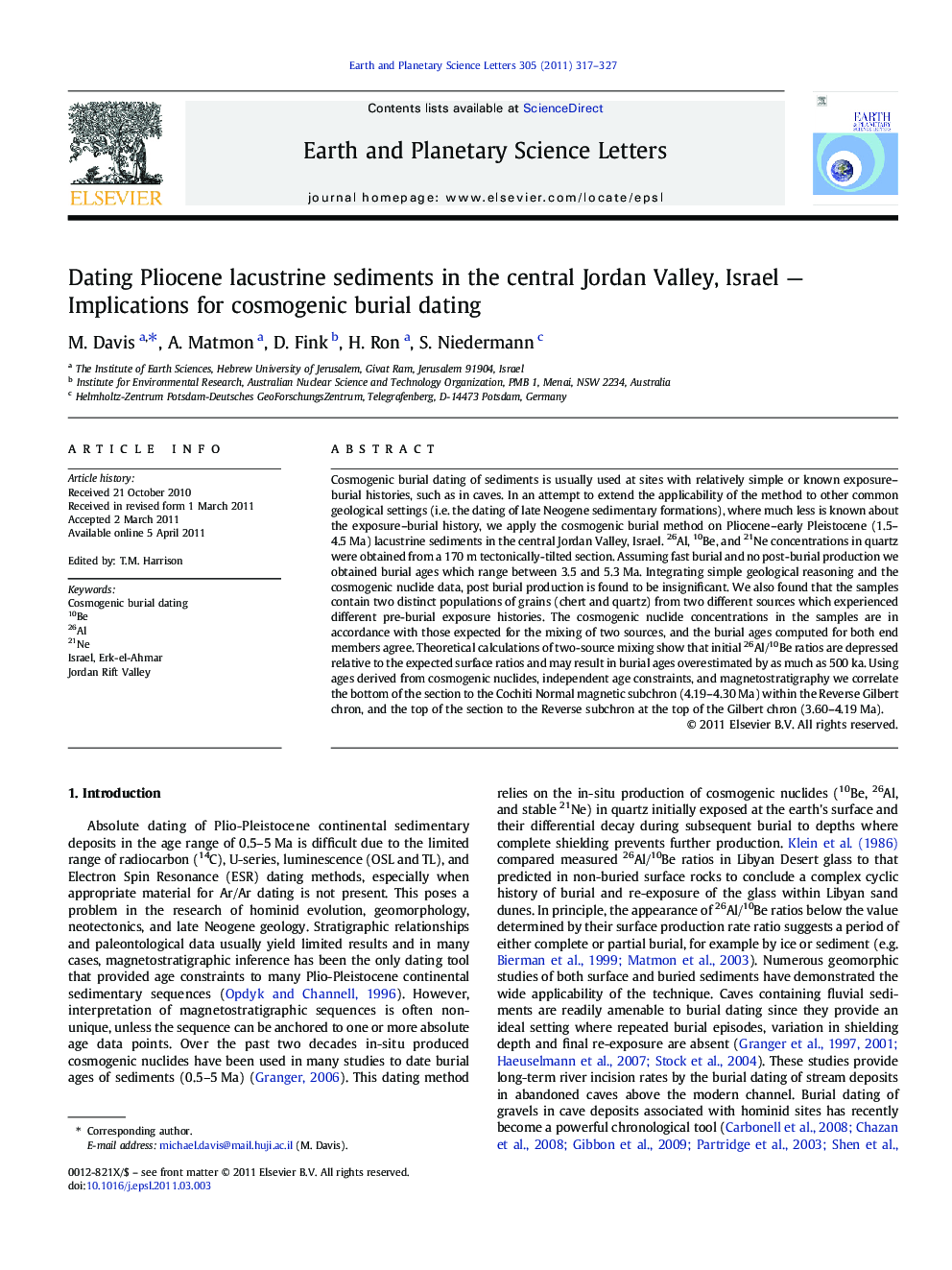| Article ID | Journal | Published Year | Pages | File Type |
|---|---|---|---|---|
| 6430805 | Earth and Planetary Science Letters | 2011 | 11 Pages |
Cosmogenic burial dating of sediments is usually used at sites with relatively simple or known exposure-burial histories, such as in caves. In an attempt to extend the applicability of the method to other common geological settings (i.e. the dating of late Neogene sedimentary formations), where much less is known about the exposure-burial history, we apply the cosmogenic burial method on Pliocene-early Pleistocene (1.5-4.5Â Ma) lacustrine sediments in the central Jordan Valley, Israel. 26Al, 10Be, and 21Ne concentrations in quartz were obtained from a 170Â m tectonically-tilted section. Assuming fast burial and no post-burial production we obtained burial ages which range between 3.5 and 5.3Â Ma. Integrating simple geological reasoning and the cosmogenic nuclide data, post burial production is found to be insignificant. We also found that the samples contain two distinct populations of grains (chert and quartz) from two different sources which experienced different pre-burial exposure histories. The cosmogenic nuclide concentrations in the samples are in accordance with those expected for the mixing of two sources, and the burial ages computed for both end members agree. Theoretical calculations of two-source mixing show that initial 26Al/10Be ratios are depressed relative to the expected surface ratios and may result in burial ages overestimated by as much as 500Â ka. Using ages derived from cosmogenic nuclides, independent age constraints, and magnetostratigraphy we correlate the bottom of the section to the Cochiti Normal magnetic subchron (4.19-4.30Â Ma) within the Reverse Gilbert chron, and the top of the section to the Reverse subchron at the top of the Gilbert chron (3.60-4.19Â Ma).
Research highlights⺠Cosmogenic burial dating of lacustrine sediments. ⺠Comparison of results to independent constraints. ⺠The sediment is derived from two different sources: aeolian quartz and chert bedrock. ⺠Age correction based on the degree of sediment mixing.
